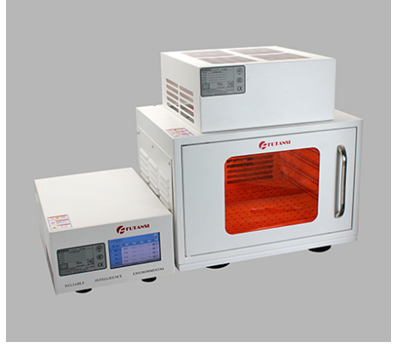UVLED curing UV glue
UVLED cures UV glue. If the wavelength is matched, the effect is quite good. It can be cured in 5 seconds. In the electronics industry, UVLED is replacing UV mercury lamps on a large scale.
Compared with UV mercury lamps, UVLEDs are more energy-efficient, efficient, environmentally friendly, ready to use, small in size, simple in maintenance, and long in life. Therefore, UVLEDs gradually occupy the UV curing market.
Most UV glue curing sources for UV glue curing are 365nm, and the surface and deep curing effects are very good. In addition, micro speakers, mobile phone cameras, digital cameras, LCD screens, touch screens and displays are all thermal products. UVLED curing light source belongs to The cold light source contains almost no infrared heat, so the surface temperature of the product is less than 5 degrees.
The application of UVLED curing light source in curing UV glue water has been very mature, especially 365nm, the curing effect is quite good, and the price of curing glue with small area light source is not expensive! UVLED light source is a cold light source, containing less infrared light, the surface of the irradiated product is less heated, especially suitable for heat-sensitive products; in addition, the life of UVLED light source products is up to 20,000 hours, no need to change the light source frequently; and the UVLED curing light source is known for saving electricity!


UV curing adhesive use:
1. Before bonding, the surface of the bonded substrate needs to be cleaned, dried and free of grease.
2. Apply UV glue to one of the surfaces, close the two planes, and illuminate with a suitable wavelength (usually 365-400 nm) of UV light or high-pressure mercury lamp for illumination. When lighting, it should be from the center to the periphery, and confirm that the light can penetrate the substrate to the bonding site.
3, the general light for about 6 seconds, the initial positioning, remove the remaining glue on the workpiece and then re-light until fully cured.
4, curing time should be different according to different bonding substrates, rubber thickness, UV intensity. Users can purchase UV intensity testers and perform light intensity tests before bonding to reduce scrap rate.
5. The temperature also has a slight effect on the activity of the glue. When the temperature is low, the curing time should be extended.
6. The material to be bonded should be applied without force extrusion and repeated friction during operation. Fixing tools should be used.
7. When plastic bonding, the content of ultraviolet absorber in plastic should be considered. The high content will seriously affect the transmittance of ultraviolet light, so it also has a significant effect on the curing efficiency of the glue, and even the glue cannot be cured.
8. Low viscosity products are recommended for large area bonding. When conditions are met, it is best to purchase vacuum equipment. Fit in a vacuum environment to remove air bubbles and improve yield.
UV glue, also known as UV-curable glue, can only be cured by ultraviolet radiation, that is, the photosensitizer in the UV glue is exposed to ultraviolet light and will be bonded to the monomer. In theory, UV glue does not cure under the illumination of an ultraviolet light source.





